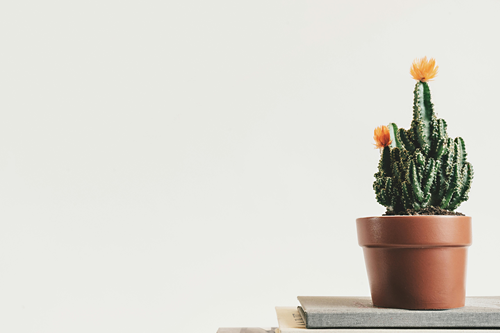Minimalism, a lifestyle and design movement that once dominated blogs and Pinterest boards in the early 2010s, is making a quiet but powerful comeback in 2025. However, this time, it’s not about empty white walls and capsule wardrobes for the sake of trendiness. It’s about something deeper: intention, sustainability, and mental clarity.
Driven by a growing need for simplicity in a cluttered, digital, and consumer-driven world, Gen Z and Millennials are reviving minimalism on their own terms. It’s more than a design aesthetic—it’s a value system that prioritizes purpose over possession, sustainability over excess, and mental peace over material gain.
1. The New Face of Minimalism in 2025
Minimalism in 2025 doesn’t look or feel like it did a decade ago. While clean lines, neutral palettes, and decluttered spaces still define the aesthetic, today’s minimalism is softer, more human, and more emotionally driven.
People are no longer interested in minimal for the sake of being trendy. Instead, it’s become a reaction to overstimulation—from social media, advertising, and constant noise. This revival is about making space, both physically and mentally, to breathe, think, and live better.
Unlike the cold and sterile minimalism of the past, the new wave includes cozy textures, warm lighting, sustainable materials, and personalized touches. It’s less about perfection and more about intention.


2. Why Gen Z and Millennials Are Leading the Movement
Both Millennials and Gen Z have grown up in times of economic uncertainty, social unrest, and environmental crises. These experiences have deeply influenced how they view ownership, consumption, and success.
Rather than chasing the traditional “American dream” filled with large homes, flashy cars, and endless material possessions, these generations are opting for smaller living spaces, quality over quantity, and purposeful purchases.
Many Gen Z and Millennials associate it with:
- Freedom from debt and financial pressure
- Environmental responsibility through reduced consumption
- Mental clarity by removing distractions
- Self-expression through curated, meaningful belongings
Minimalism aligns with their values, not just their style preferences. They’re choosing experiences over things and focusing on relationships, travel, creativity, and personal development.
3. The Rise of Digital and Lifestyle Minimalism
Minimalism in 2025 isn’t limited to physical spaces. A major trend this year is digital minimalism—the practice of reducing digital clutter to regain focus and reduce stress.
With rising concerns about mental health, screen fatigue, and information overload, more people are deleting unused apps, limiting notifications, taking social media breaks, and curating their digital lives intentionally. It’s not just about “less stuff”—it’s about less noise.
This type of minimalism helps people:
- Reclaim time and attention
- Improve sleep and reduce anxiety
- Strengthen real-life relationships
- Reconnect with offline passions
In addition to digital habits, people are also rethinking how they spend their time. From streamlining morning routines to adopting minimalist skincare and wellness practices, it’s all about making space for what truly matters.
4. Sustainable Living: A Key Driver of Modern Minimalism
One of the biggest motivations behind minimalism today is sustainability.
With growing awareness of climate change, waste, and unethical labor practices, more young consumers are rejecting fast fashion, plastic-heavy packaging, and disposable culture. Instead, they’re embracing:
- Eco-friendly materials (like bamboo, linen, and recycled products)
- Second-hand shopping and thrifting
- Quality investments that last longer
- Zero-waste living or low-waste alternatives
This approach naturally aligns with minimalist values. Owning less reduces one’s environmental footprint, conserves resources, and encourages mindful consumption.
Minimalism, therefore, isn’t just about personal benefits—it’s also a collective act of responsibility.
Read More: Silent Walks: Why Gen Z Is Ditching Headphones for Mindful Mornings in 2025 | What is 75 hard challenge? | HOW YOGA BENEFITS YOU IN EVERYDAY LIFE | WHAT IS CARB CYCLE – FAST FAT BURNING PROCESS! | Fittheories | 10 Powerful Reasons Why Outdoor Sports Are Essential for Family Bonding
5. Minimalism in Home Design and Decor
In interior design, minimalism in 2025 has evolved into what some call “warm minimalism” or “soft minimalism.” It still focuses on simplicity and functionality, but without feeling cold or lifeless.
Today’s minimalist homes often include:
- Neutral color palettes with warm undertones
- Natural textures like wood, stone, and linen
- Fewer but higher-quality furnishings
- Open spaces with lots of natural light
- Multi-purpose furniture for small spaces
This style supports the needs of remote workers, small apartment dwellers, and young professionals who value flexibility and calmness at home.
Home is now a sanctuary, not a showpiece. The focus is on comfort, clarity, and intentionality.


6. Is Maximalism a Countertrend?
Interestingly, while minimalism is gaining momentum, maximalism is also on the rise—particularly among creatives and influencers on platforms like TikTok.
Maximalism is colorful, bold, and expressive. It’s about layering patterns, mixing eras, and celebrating individuality. For some Gen Zers, especially those in urban and creative spaces, maximalism feels more authentic and joyful.
But the coexistence of both trends shows that minimalism isn’t a universal aesthetic—it’s a personal lifestyle choice. For many, minimalism offers peace. For others, maximalism offers identity.
Still, even among maximalists, there’s a growing awareness of intentionality—people are curating spaces and wardrobes, not just collecting things. In that sense, the minimalist mindset still has a strong influence.
7. Mental Health and Emotional Benefits
Minimalism isn’t just about stuff—it’s deeply connected to mental well-being.
Research and anecdotal evidence suggest that cluttered spaces can lead to increased stress, anxiety, and decision fatigue. On the other hand, clear spaces support:
- Improved focus and productivity
- Reduced stress and overstimulation
- Greater emotional regulation
- Better sleep and relaxation
By simplifying their environments, many Millennials and Gen Zers find it easier to concentrate, relax, and stay present in the moment.
Moreover, minimalist lifestyles encourage gratitude—by focusing on what one already has and cherishing each item or experience, people can find more contentment in everyday life.
8. Economic and Practical Motivations
Let’s not ignore the economic side. With rising costs of living, student loan debt, and an increasingly unstable job market, minimalism often becomes a practical necessity, not just a lifestyle choice.
Choosing to live with less can mean:
- Smaller rent or mortgage payments
- Lower utility bills
- Fewer impulse buys
- Less pressure to “keep up” socially or financially
For Gen Z and Millennials, financial freedom is a huge motivator. They’re choosing smaller homes, fewer subscriptions, and simpler lifestyles so they can save, travel, invest, or build businesses.
Minimalism helps them take control of their finances and live life on their own terms.
9. Is Minimalism Here to Stay?
Minimalism isn’t just a passing trend—it’s evolving with the times.
In 2025, it’s clear that the movement has matured. It’s no longer about extremes or rigid rules. It’s about conscious living—making choices that align with one’s values, goals, and mental health.
Whether that means having a minimalist wardrobe, limiting digital distractions, designing a calming home, or consuming less for the planet, people are finding unique ways to apply minimalism to their lives.
For Gen Z and Millennials, especially, minimalism represents freedom, clarity, and empowerment.


Conclusion: A Minimalist Mindset for a Maximalist World
In a world that’s louder, faster, and more crowded than ever, minimalism offers a quiet resistance.
And in 2025, that resistance is growing—not because it’s stylish, but because it’s necessary.
Gen Z and Millennials are leading the way by redefining success, consumption, and happiness. They’re choosing to simplify—not as a sacrifice, but as a way to live more fully, authentically, and sustainably.
Minimalism is no longer just a trend. It’s a mindset—and it’s here to stay.
Also Read: The Primal Fitness Comeback: Why Natural Movement is Booming in 2025 | 7 Powerful Reasons Why Pickleball Is the Fastest-Growing Outdoor Fitness Trend | Labubu Blind Boxes Unboxed: The Viral Toy Craze Redefining Fashion and Fandom in 2025 | Digital detox 2025 | Sustainable Lifestyle 2025